Filter by

The Principles and Practice of Nutritional Support
This book provides the reader with an understanding of human nutritional and metabolic physiology and how it goes wrong in illness. Divided into three major sections, the volume instructs the reader on how and when to use nutritional support, and includes a summary of the published outcome studies on the application of nutritional support to the management of common illnesses. In this way, the …
- Edition
- -
- ISBN/ISSN
- 978-1-4939-1779-2
- Collation
- XVII, 241
- Series Title
- -
- Call Number
- -
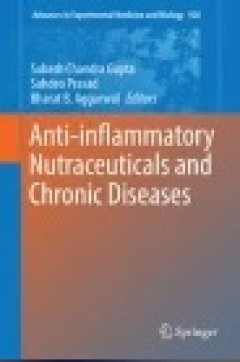
Anti-inflammatory Nutraceuticals and Chronic Diseases
This comprehensive volume focuses on anti-inflammatory nutraceuticals and their role in various chronic diseases. Food and Drug Administration (FDA) approved drugs such as steroids, non-steroidal anti-inflammatory drugs (NSAIDS), statins and metformin have been shown to modulate inflammatory pathways, but their long-term intake has been associated with numerous side effects. This means that the…
- Edition
- Ed. 1
- ISBN/ISSN
- 978-3-319-41334-1
- Collation
- VIII, 482
- Series Title
- Advances in Experimental Medicine and Biology
- Call Number
- 613.2 ANT a

Nutrition and Labelling for the Canadian Baker
This book is intended to give students a basic understanding of nutritional information and labelling in the baking industry. In particular, there is a focus on Canadian regulations regarding labelling and merchandising of baked goods, as well as baking for customers with special diets, allergies, and intolerances.Nutrition and Labelling for the Canadian Baker is one of a series of Culinary Art…
- Edition
- -
- ISBN/ISSN
- -
- Collation
- -
- Series Title
- -
- Call Number
- 641.5 BCC n

Nutrition
The CK-12 foundation defines a flexbook as a “free and open source textbook platform where one can build and edit collaborative textbooks1.” The FNDH 400 (formerly the HN 400 flexbook, department changed its name from Human Nutrition to Food, Nutrition, Dietetics and Health) Flexbook fits this definition, but I feel the name is particularly accurate due to the flexibility of Google Docs. St…
- Edition
- -
- ISBN/ISSN
- -
- Collation
- -
- Series Title
- -
- Call Number
- 613 KEL n

Yellow Alkaline Noodles Processing Technology and Quality Improvement
This Brief will provide an overview of various types of noodles with special emphasis on yellow alkaline noodles. It includes detailed discussions about yellow alkaline noodles including their ingredients, processing technology, the factors affecting their nutritional value and quality. Recent developments and potential ways of improving ingredient quality and enhancing their shelf life are the…
- Edition
- -
- ISBN/ISSN
- 978-3-319-12865-8
- Collation
- -
- Series Title
- -
- Call Number
- -
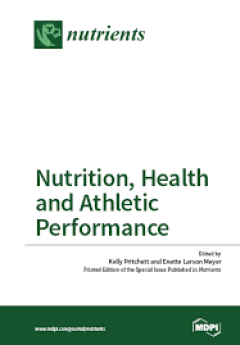
Nutrition, Health and Athletic Performance
Optimal nutrition is fundamental for enhancing training, recovery and performance in sport. Therefore, research has aimed to determine the efficacy of appropriate intake of nutrients, fluids, and supplements and their role in exercise performance. The purpose of this Special Issue entitled “Nutrition, Health and Athletic Performance” is to highlight recent research examining aspects of spor…
- Edition
- -
- ISBN/ISSN
- 978-3-03842-627-1
- Collation
- -
- Series Title
- -
- Call Number
- 572 NUT
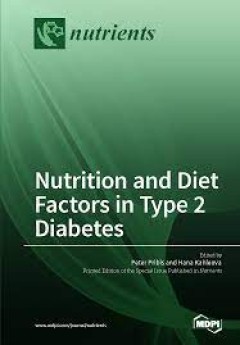
Nutrition and Diet Factors in Type 2 Diabetes
Diabetes mellitus has become a major public health burden. Approximately seven million people develop diabetes in both developed and developing countries every year, with the most dramatic increases occurring in Type 2 Diabetes. Especially alarming, is the rising incidence of Type 2 Diabetes in obese children before puberty.
- Edition
- -
- ISBN/ISSN
- 978-3-03842-915-9
- Collation
- -
- Series Title
- -
- Call Number
- 572 NUT
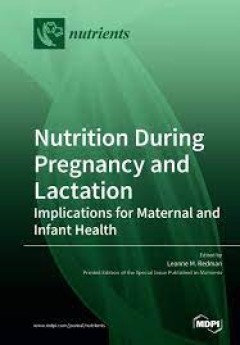
Nutrition During Pregnancy and Lactation : Implications for Maternal and Infa…
Pregnancy is a viewed as a window to future health. With the birth of the developmental origins of human adult disease hypothesis, research and clinical practice has turned its attention to the influence of maternal factors such as health and lifestyle surrounding pregnancy as a means to understand and prevent the inter-generational inheritance of chronic disease susceptibility. Outcomes during…
- Edition
- -
- ISBN/ISSN
- 978-3-03928-055-1
- Collation
- -
- Series Title
- -
- Call Number
- 572 NUT
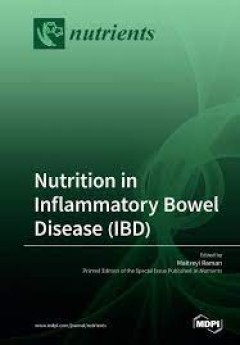
Nutrition in Inflammatory Bowel Disease (IBD)
The purpose of this Special Issue “Nutrition in Inflammatory Bowel Disease (IBD)” is to increase knowledge regarding the role of dietary composition and effects in IBD, describing the prevalence of malnutrition in IBD and the effect on clinical outcomes, discussing methods of nutrition risk screening and assessment in IBD, and reviewing mechanisms through which diet and dietary components m…
- Edition
- -
- ISBN/ISSN
- 978-3-03921-440-2
- Collation
- -
- Series Title
- -
- Call Number
- 572 NUT
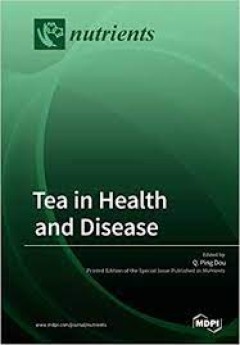
Tea in Health and Disease
Tea, made from the leaves of the Camellia senenisis plant, is the second most consumed beverage worldwide after water. Accumulating evidence from cellular, animal, epidemiological and clinical studies have linked tea consumption to various health benefits, such as chemoprevention of cancers, chronic inflammation, heart and liver diseases, diabetes, neurodegenerative diseases, etc. Although such…
- Edition
- -
- ISBN/ISSN
- 978-3-03897-987-6
- Collation
- -
- Series Title
- -
- Call Number
- 572 TEA
 Computer Science, Information & General Works
Computer Science, Information & General Works  Philosophy & Psychology
Philosophy & Psychology  Religion
Religion  Social Sciences
Social Sciences  Language
Language  Pure Science
Pure Science  Applied Sciences
Applied Sciences  Art & Recreation
Art & Recreation  Literature
Literature  History & Geography
History & Geography